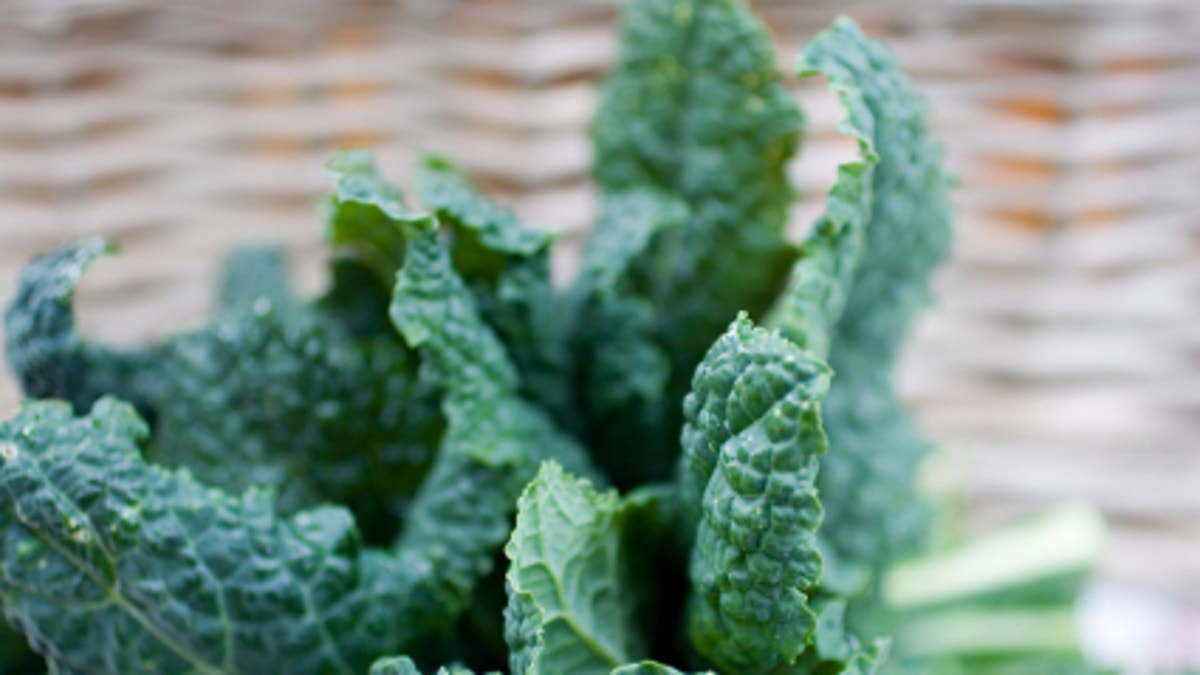
Fresh kale. (iStock)
With the days at their shortest and snow blanketing the landscape, winter can feel a little bleak. But you can battle the winter blues this year by creating a lush patch of greenery in your own home or backyard. We’ll show you how to build a winter garden to remind you that spring is just around the corner.
Terrarium
Indoors plants are the most common way to add a little greenery to a drab winter existence. But rather than settle for a few pots of ivy or a poinsettia left over from Christmas, why not liven things up with a more exotic and interesting indoor garden?
Terrariums are increasingly popular among green thumbs, and these glass enclosures, which help trap moisture, are the perfect antidote to arid winter air. The goal with these little glass orbs is to create an ecosystem in miniature. Fill it with moss and a tiny fern, or create a desert-scape with a few cacti and some sand -- the joy is in inventing something unique.
For an even more eye-catching patch of indoor greenery, check out a Wardian case. Developed by Nathaniel Ward in the early nineteenth century, these enclosures were designed to transport tropical plants from overseas colonies, particularly ferns and orchids. Made from wrought-iron, and often built in a neo-gothic style, the classic look of these enclosures will make your winter garden even more attention-grabbing.
Greenhouse
Depending on where you live in the country, a greenhouse, or cold frame garden, can be a great way to keep a garden growing all year long. While it won’t do much good if you are currently blanketed under a few feet of snow, for people in more temperate parts of the country, where the coldest temperatures hover around the freezing mark, a greenhouse is a great way to keep the frost off.
A greenhouse doesn’t have to be a large, walk-in structure that costs a fortune. By inserting a few flexible poles -- or even halved hula-hoops -- into your raised garden bed, you can create the structure for a greenhouse. Then, simply stretch some clear plastic sheeting over the hoops, and seal it with a staple gun at the bottom.
By filling your greenhouse with hardy winter vegetables -- like kale, beets and broccoli -- you’ll have plenty of delicious food to last you until spring.
Grow Lights
It’s not just the cold that stifles verdant growth in the winter; it’s also the lack of sunlight. The weak winter sun and short days make it difficult for indoor plants to grow properly. If you have trouble keeping plants alive in the winter, you might consider setting up some grow lights.
In the age of incandescent bulbs, grow lights were difficult to use. The heat produced by the lights often would often fry delicate seedlings, and the high-energy consumption made them prohibitively expensive for a simple indoor herb garden (except, of course, for those who were using them to grow a crop of certain illicit herbs).
These days, however, increasingly powerful incandescent and LED grow lights are easy-to-use and affordable options for gardeners. A simple setup for a few pots of herbs can cost around $50. While not a replacement for the full sun of a summer’s day, these lights can give your garden a boost in these darkest months, and are also a perfect way to get started early planting seedlings for the spring.